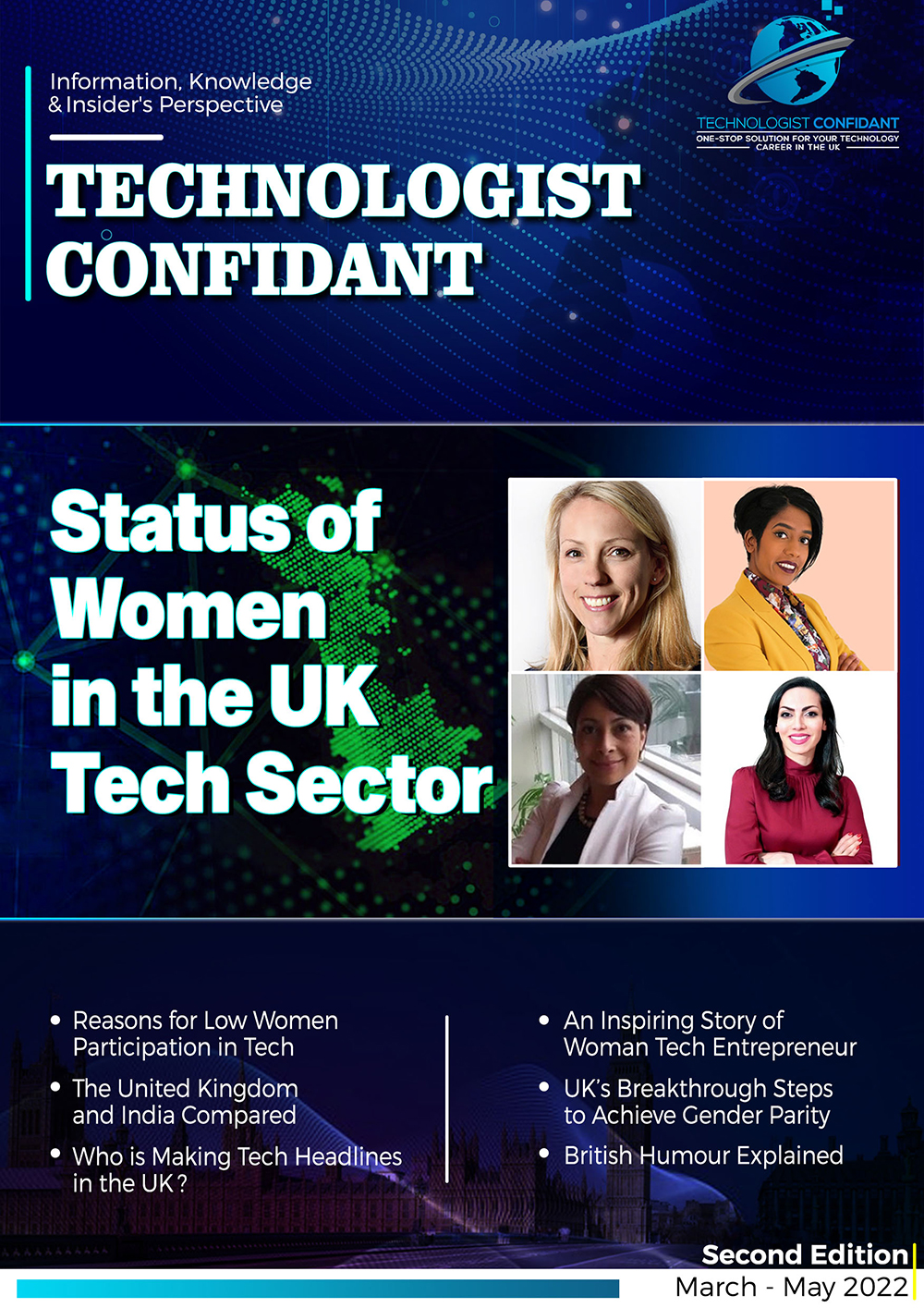The COVID-19 pandemic has accelerated the adoption of collaborative applications of AI, IoT, Big data and cloud services; such technology fields are coming into focus and emerging as clear champions in the middle of an uncertain situation. Countries globally are benefiting from the rapid spread of technology and the substantial growth of the technology sector. For example, the UK created 29 unicorns worth $1 billion and raised £26 billion in venture capital in 2021. Similarly, just behind the UK, India's tech VC investment is fourth in the world with $13.3bn in 2020 (Tech Nation). The United Kingdom and India have played a significant role in promoting innovation during the pandemic. The tech scene in the UK and India is very enticing right now. However, women's progression in the tech domain is still stalled. In this comparative article, we explore the status of women in the technology sectors of the UK and India.
Similar hiring trends for females in IT
India: in 2021-22, major IT firms such as Tata Consultancy Services (TCS), Wipro, HCL Technologies, and Infosys expect to hire roughly 60,000 women through college placements. Women who return to work after a sabbatical are awarded a 70% raise over their previous income, according to a report published in the Times of India.
The UK: around 150,000 jobs created in the tech sector in the country for women. In the data published by the Office for National Statistics, the country had created an additional 58,000 tech jobs between the months of July and September last year. The majority of positions held in these jobs are by women.
A similar workplace culture that forces women to quit IT roles
India: Indian women in IT face a significant gender gap that fosters a gender pay gap or less earning and fewer developmental or growth opportunities. It demonstrates how difficult it is for female tech employees in India to advance in their careers.
The UK: stereotypes about the types of people who usually fill technology roles put girls off from choosing a technology career from a young age.
Similar impacts of COVID-19 on women in UK and India tech
India: The COVID-19 pandemic has put a brake on increasing gender diversity ratio. As per a new report by the cybersecurity firm Kaspersky, 76% of Indian women in tech believe that the effects of COVID-19 have delayed their career advancement.
The UK: 47% of women working in technology believe the effects of COVID-19 have delayed their career progression.
Different trends in STEM education
India: Women account for over 43% of all STEM graduates in India, one of the highest rates in the world. But women chose to pursue STEM education because of family pressure.
The UK: Between 2010 and 2019, the number of women and girls enrolling in STEM A-levels increased by 31%. There has also been a 2.8 per cent and 3.9 per cent rise in the number of young girls taking Mathematics. Unlike India, UK parents are not extremely keen on pressuring their children into technology.
Different hiring trends for females in IT
India: To encourage gender diversity in the workforce, Indian IT companies are focused on offering opportunities for female candidates for entry-level positions. It means women's participation in the workforce is higher at entry-level, it gradually drops at higher positions.
The UK: The UK appears to have a higher concentration of women in mid-level roles. The top position in technology for women is Project Manager, whereas the top position in technology for men is Software Engineer. This bias is based on the stereotype that women are not good in technical roles.
Different rates at which women quit Tech roles
India: Within ten years, 56% of technical women leave their jobs, which is more than double the rate for men.
The UK: According to a study published by The Center for Talent Innovation, 52% of highly skilled women in science, engineering, and technology have left their positions.
Different ways to represent women role models
India: Advertisements, pamphlets, and public billboards in India expose women to women as role models in the technology business.
The UK: A dearth of role models in the technology space to inspire others to start a career in science and technology is a concern that even young females have raised.
Recommendations for women on joining the UK tech sector
The nice thing about women with strong technical skills is that your skills are high in demand in the UK tech industry; you can effortlessly find an attractive job across the UK. Networking is the key - finding a good job is much easier when you have a solid network within the tech sector. When it comes to progressing in your career or leadership positions, always keep in mind that learning new skills and taking initiatives in new projects will always support you. The UK tech scene is highly competitive and dynamic; it keeps changing and evolving- making sure your skills are up to date and relevant will help you stay ahead.
To conclude, India has a higher concentration of women in entry-level positions and STEM education, while the UK appears to have a higher concentration of women in mid-level roles. Most women in India pursue a career in technology because their parents, predominantly fathers decide their daughters' career choices. However, there is a great demand for women in technology in the UK, and UK firms are willing to pay a premium to employ a female for top technology jobs.






